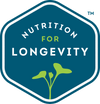Cruciferous Vegetables on KetoFLEX 12/3
It is important to try to make sure you are eating plenty of cruciferous vegetables within your KetoFLEX 12/3 meal plan. Cruciferous vegetables are among the most nutrient dense of any vegetables, with potent antioxidants. Some cruciferous vegetables overlap with the leafy greens including arugula, collard greens, dandelion greens, mustard greens, rapini, Swiss chard and watercress. Others include the alliums: garlic, leeks, onions, and shallots and the brassicas: bok choy, broccoli, Brussels sprouts and cauliflower.
Sulforaphane
A phytonutrient called sulforaphane, found in many cruciferous vegetables, is responsible for its health benefits, but proper preparation of your cruciferous vegetables is vital for gleaning its protective benefits. If you're eating them raw, the act of chewing releases an enzyme called myrosinase that mixes with a sulfur compound in the vegetable called glucosinolates to naturally create a chemical reaction to release the sulforaphane.
How can I get these benefits?
You can get the same benefit when cooking your cruciferous vegetables by simply chopping them, then waiting 10-45 minutes before cooking. It's best to cook them minimally to protect the sulforaphane by blanching, lightly steaming, or sautéing them at a medium heat to preserve a bit of crunch. If you forget to pre-chop, you could add a small amount of mustard powder, horseradish or shaved Daikon radish root to any cooked cruciferous vegetable to create a similar chemical reaction that naturally increases the antioxidant-rich sulforaphane.


